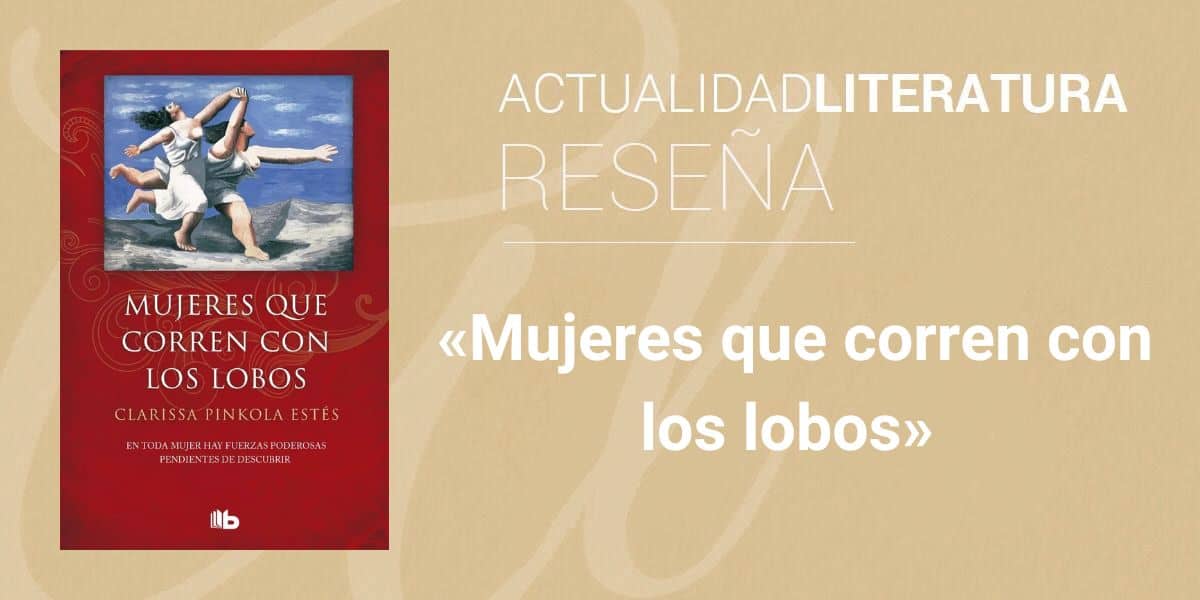
Women who run with the wolves
Women Who Run With the Wolves: Myths and Stories of the Wild Woman Archetype is a book that mixes fairy tales and psychoanalysis. It was written by the American clinical psychologist and poet Clarissa Pinkola Estés. Its original publication date in English dates back to 1989. In 1992, Ballantine Books launched a new edition that was translated into several languages, including Spanish and Catalan.
The work had the record of spending 145 weeks on the newspaper's prestigious best-seller list. New York Times. Pinkola Estés, being of Mexican descent, earned the Las Primeras award from the National Association of Mexican American Women thanks to being declared a best-selling writer by the newspaper.
Synopsis of Women who run with the wolves
Women who run with the wolves is a compendium of ancient fairy tales explained from psychoanalysis. Clarissa Pinkola Estes takes familiar stories from popular culture and breaks them down into a comprehensive analysis of their characters' behavior, focusing particularly on his female representations to give a clear message: women should follow their intuition and instinct.
Through some stories that we have all heard, such as Blue Beard o manawee, the author embarks on an investigation that reflects her travels, conversations with her family or consultations with her patients. Through oral tradition and literature, Pinkola Estés submits to conscientious evaluation certain attitudes, customs and reasoning that must be left behind so that we can once again be truly free.
The topics that the book deals with are: the ways of healing, the cycles of life and art as therapy.
The Wild Woman Archetype
Clarissa Pinkola Estes is a confessed admirer and student of the work of Carl Gustav Jung, renowned psychologist XNUMXth century Château. The author is famous for his theories and essays on the analysis of dreams, and, above all, for his personality archetypes. Archetypes are emotional and behavioral patterns that are present in the collective DNA. Through them we can perceive concepts about people and the world.
Pinkola Estés, as a good Jungian psychoanalyst, shown in Women who run with the wolves her own archetype: the Wild Woman. This is described as the old woman, the one who knows, the wolf. It is a spelling of the woman who is strong and knows how to defend herself, that she understands her very nature, follows her instincts, and embraces preserving her primitive intuition, because it is what has helped her survive.
Introductory paragraph of the work
“A healthy woman is much like a wolf: robust, full, as powerful as the life force, life-giving, aware of her own territory, resourceful, loyal, constantly on the move. Instead, the separation of wild nature causes a woman's personality to thin out, weaken and acquire a spectral and phantasmagorical character.
"We are not made to be puny creatures with brittle hair, unable to jump, to chase, give birth and create a life. When women's lives become stagnant or filled with boredom, it's time for the wild woman to emerge; it is time for the creative function of the psyche to flood the delta”.
Explanation of the first two chapters of Women Who Run with the Wolves
Chapter 1: The Howling: Resurrection of the Wild Woman
After the introduction and a few words from the author, the first story we come across is The wolf, a fable about a woman who collects bones until she puts together the skeleton of a wolf. Since then the animal comes to life and later transforms into a female that runs and laughs out loud. After presenting the story, Pinkola Estés proceeds to explain it from the perspective of psychoanalysis.
“We all start our journey as a bag of bones lost somewhere in the desert, a disassembled skeleton, hidden under the sand. Our mission is to recover the different pieces”, says the author. Through The wolf, Pinkola Estés determines that only through deep love can people be able to heal.
The collection of bones is also the recognition of all the heavy fragments of the psyche, and how its reconstruction can save us from lifeless integration into an increasingly rationalist society.
Chapter 2: Stalking the Intruder: The Initial Initiation
The second story presented in Women who run with the wolves es Blue Beard, the story of a man who seduces three sisters to marry them. In the end, the minor accepts and moves into her house. One day, Bluebeard tells his young wife that she is going to leave her, and she hands him a bunch of keys. The man warns her that she can enter all the rooms except one.
When the husband leaves, the girl, curious, decides to use the forbidden key and enters the secret room. There she finds the corpses of Bluebeard's disobedient wives. In the end, he looks for her to murder her, but the woman mortally wounds her husband with the help of her sisters and escapes from her. Clarissa Pinkola Estés speaks después about a predator that exists inside every female.
This beast hides in the shadows and absorbs all the light and creativity that Wild Woman projects. In addition, Mention is made of man as a predator and of the ingenuity of youth.
About the author, Clarissa Pinkola Estés

Clarissa Pinkola Estes
Clarissa Pinkola Estés was born in 1943, in Gary, Indiana, United States. She is a well-known doctor in psychoanalysis, expert in psychology trauma, writer, poet and social activist. She grew up in a Mexican family of indigenous descent until, four years after her birth, her parents gave her up for adoption to a Hungarian family who fled the war.
No one at her center had any formal education, but Clarissa lived her whole life surrounded by stories told to her by her aunts, stories that, much later, would become part of her life. Women who run with the wolves. In 1976,, after many personal tribulations and several walks for government aid, graduated as a psychotherapist from Loreto Heights College in Denver, Colorado.
Other books by Clarissa Pinkola Estés
- The Gift of Story: A Wise Tale About What is Enough (1993);
- The Faithful Gardener: A Wise Tale About that Which Can Never Die (1996);
- Untie the Strong Woman: Blessed Mother's Immaculate Love for the Wild Soul (2011)
